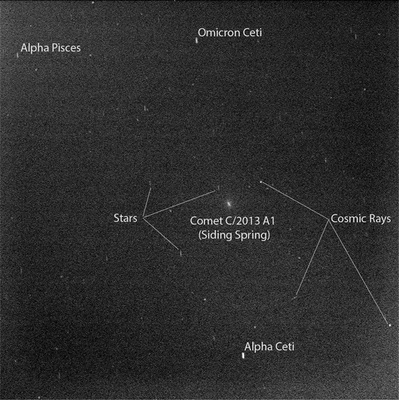NASA Rover Opportunity Views Comet Near Mars
Images of comet A1 Siding Spring from the rover's panoramic camera (Pancam) are online at:
http://www.jpl.nasa.gov/spaceimages/details.php?id=PIA18591
http://www.jpl.nasa.gov/spaceimages/details.php?id=PIA18592
http://www.jpl.nasa.gov/spaceimages/details.php?id=PIA18617
Researchers used Opportunity's Pancam to image at a range of exposure times about two-and-one-half hours before the closest approach of the nucleus of comet Siding Spring to Mars. By the time of closest approach at about 87,000 miles (139,500 kilometers), dawn had lit the sky above Opportunity.
"It's excitingly fortunate that this comet came so close to Mars to give us a chance to study it with the instruments we're using to study Mars," said Opportunity science team member Mark Lemmon of Texas A&M University, who coordinated the camera pointing. "The views from Mars rovers, in particular, give us a human perspective, because they are about as sensitive to light as our eyes would be."
Three NASA Mars orbiters, two Mars rovers and other assets on Earth and in space are studying comet Siding Spring. This comet is making its first visit this close to the sun from the outer solar system's Oort Cloud, so the concerted campaign of observations may yield fresh clues to our solar system's earliest days more than 4 billion years ago.
Opportunity has been roving on Mars since January 2004 and has provided evidence about the Red Planet's ancient wet environments.
For more about Opportunity, visit:
http://www.nasa.gov/rovers
http://marsrovers.jpl.nasa.gov
For more about comet Siding Spring, visit: http://mars.jpl.nasa.gov/comets/sidingspring/
